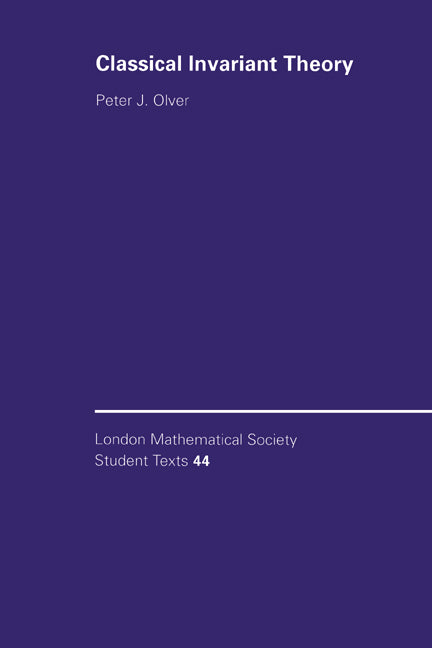Freshly Printed - allow 8 days lead
Couldn't load pickup availability
Classical Invariant Theory
The book is a self-contained introduction to the results and methods in classical invariant theory.
Peter J. Olver (Author)
9780521558211, Cambridge University Press
Paperback, published 13 January 1999
304 pages, 7 b/w illus. 10 tables 122 exercises
22.9 x 15.3 x 1.9 cm, 0.405 kg
'… impressive … a beautiful book.' Liam O'Carroll, Bulletin of the London Mathematical Society
There has been a resurgence of interest in classical invariant theory driven by several factors: new theoretical developments; a revival of computational methods coupled with powerful new computer algebra packages; and a wealth of new applications, ranging from number theory to geometry, physics to computer vision. This book provides readers with a self-contained introduction to the classical theory as well as modern developments and applications. The text concentrates on the study of binary forms (polynomials) in characteristic zero, and uses analytical as well as algebraic tools to study and classify invariants, symmetry, equivalence and canonical forms. It also includes a variety of innovations that make this text of interest even to veterans of the subject. Aimed at advanced undergraduate and graduate students the book includes many exercises and historical details, complete proofs of the fundamental theorems, and a lively and provocative exposition.
Introduction
Notes to the reader
A brief history
Acknowledgements
1. Prelude - quadratic polynomials and quadratic forms
2. Basic invariant theory for binary forms
3. Groups and transformations
4. Representations and invariants
5. Transvectants
6. Symbolic methods
7. Graphical methods
8. Lie groups and moving frames
9. Infinitesimal methods
10. Multi-variate polynomials
References
Author index
Subject index.
Subject Areas: Geometry [PBM]


